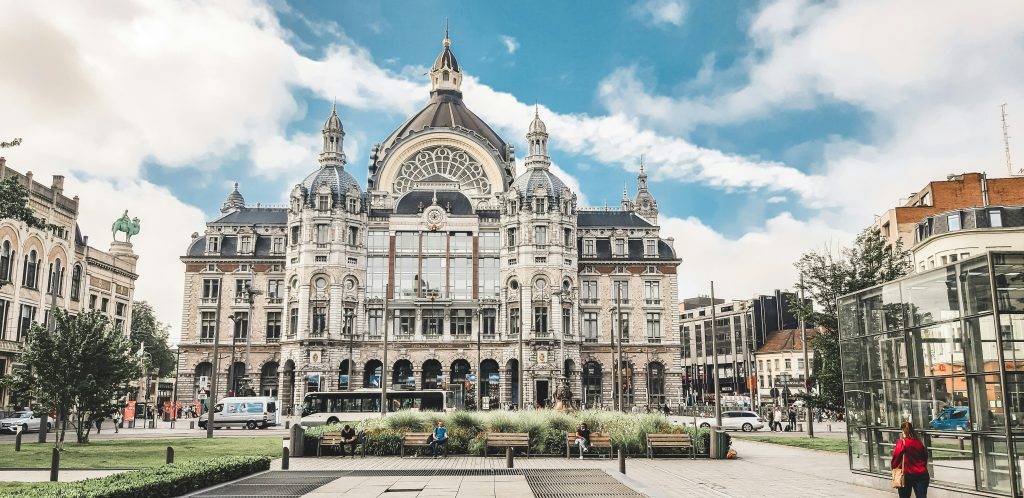Welcome to Antwerp, a city where history, culture, and contemporary flair converge to create an enchanting destination in the heart of Belgium. Nestled along the banks of the Scheldt River, Antwerp boasts a rich maritime heritage, evidenced by its bustling port and intricate network of canals. Renowned as the diamond capital of the world, this vibrant metropolis sparkles not only with precious gems but also with architectural marvels, world-class museums, and a thriving culinary scene.
Table of Contents
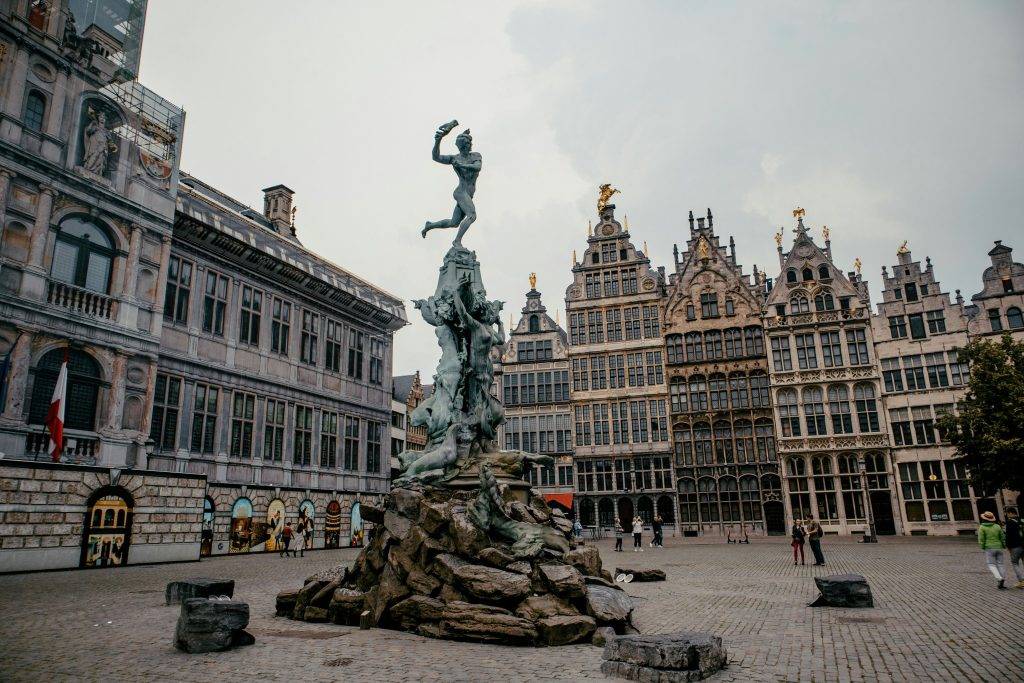
Introduction
Antwerp is a port city and capital of Antwerp province in Flanders, the northern region of Belgium. With just over 500,000 inhabitants, it is the second largest city in Belgium (after Brussels). It sits about 40 miles north of Brussels near the east bank of the river Scheldt, which is linked to the North Sea by the Westerschelde estuary.
The city has a long and storied history dating back to at least the 12th century. The city grew as a commercial center due to its strategic location on the Scheldt and became an important port and main hub for trade, finance, fashion, and diamond trading.
Today, it is known for its medieval landmarks, and vibrant cultural scene, and remains an important center of business, transport, industry, and art in Belgium. The port of Antwerp is one of the biggest in the world and its international character gives the city a very multicultural feel.
The climate is influenced by both maritime and continental factors. It has cool winters, with average temperatures around 37°F in January, and mild summers, with average temperatures of 68°F in July. The chance of rain is spread fairly evenly throughout the year. The best time to visit is spring (and fall) when the weather is pleasant and fewer tourists are in the city.
Is Antwerp worth visiting?
Absolutely, Antwerp is unquestionably worth visiting, boasting an array of attractions that make it a must-see destination. Explore the iconic Het Steen, a medieval fortress overlooking the Scheldt River, offering a glimpse into the city’s historic past. Marvel at the architectural wonders of Antwerp’s beautiful train stations, such as the grandiose Antwerpen-Centraal station, hailed as one of the most beautiful train stations in the world. Don’t miss the opportunity to stroll down Meir, the city’s main shopping street, lined with trendy boutiques, stylish cafes, and historic landmarks. With its blend of history, culture, and modernity, Antwerp promises an unforgettable experience for every traveler.
Planning your Antwerp trip
When planning your trip, consider a few travel tips to enhance your experience in this enchanting city. Firstly, invest in an Antwerp City Card for access to major attractions and unlimited use of public transportation, making it easier to explore the city’s diverse neighborhoods. Don’t forget to pack comfortable walking shoes to navigate the cobblestone streets and picturesque alleys of the Old Town. Additionally, be sure to sample the local cuisine at traditional Belgian taverns known as “brown cafes” for an authentic gastronomic experience.
For those interested in art and history, booking guided tours of renowned museums like the Rubenshuis and the Museum aan de Stroom (MAS) can provide valuable insights into Antwerp’s cultural heritage. Lastly, immerse yourself in the vibrant atmosphere of Antwerp’s markets, such as the bustling Antwerp Market on Sundays, where you can discover unique souvenirs and mingle with locals. By incorporating these travel tips into your Antwerp itinerary, you’ll make the most of your trip and create lasting memories in this captivating city.
Getting to Antwerp
Antwerp is easily accessible by plane, train, and car. The major gateway is Antwerp International Airport (ANR), which is only 6 km from the city center. There are regular flights from London, Paris, Amsterdam, Berlin, and other major European cities.
The high-speed train network also makes it easy to reach Antwerp. Direct trains from Brussels to Antwerp take only around 35 minutes. From Paris, the journey takes about 2 hours, while London to Antwerp by train takes just under 3 hours with a connection in Brussels.
Antwerp Central Station is the main railway station in the city center. It has regular national and international connections. Trains run frequently between Antwerp and Ghent, Bruges, Amsterdam, Rotterdam and Lille in nearby France.
For those looking to drive, Antwerp is less than an hour’s drive from Brussels. It’s also only about 1.5 hours from Amsterdam, 2.5 hours from Paris, and 3.5 hours from London via the Eurotunnel shuttle train. Note that driving and parking in Antwerp city itself can be difficult due to traffic congestion and limited parking.
Whether arriving by air, rail or road, Antwerp’s central location makes it easily accessible for travelers. Once there, the historic city center is compact and walkable, with an excellent public transportation network of buses, trams, and metro.
What to do in Antwerp? Top Sights
Antwerp is home to numerous impressive landmarks and museums that should be on every visitor’s itinerary. Here are some of the top sights to see:
Cathedral of Our Lady
The Cathedral of Our Lady is a Gothic style cathedral and one of the most prominent landmarks in Antwerp. It features the highest church spire in Benelux, standing at 400 feet tall. The interior contains stunning artwork by Peter Paul Rubens and other famous artists. Don’t miss the opportunity to see Rubens’ masterpieces “The Descent from the Cross” and “The Elevation of the Cross”.
Grote Markt
The Grote Markt is the central square of Antwerp lined with guildhalls, the City Hall, and cafes. The Renaissance style Brabo fountain depicts a Roman soldier throwing a giant’s hand. Surrounding the square are many restaurants with outdoor seating, perfect for people watching. The Grote Markt comes alive with a bustling market on many days.
Plantin-Moretus Museum
This museum is based in the mansion of the famous printer Christophe Plantin and showcases the work of the Plantin-Moretus printers through the ages. It provides a glimpse into their lives and the Golden Age of Antwerp in the 16th century. Highlights include the oldest printing presses in the world still in working order.
MAS Museum
The Museum aan de Stroom (MAS) focuses on Antwerp’s history as a port city. The exhibits span many topics including maritime trade, cartography, shipping, and city history. The contemporary building offers panoramic views from the rooftop overlooking the city and river. The MAS is one of Antwerp’s contemporary landmarks.
Walking Tours
Antwerp’s compact historic center makes it easy to explore on foot. Many of the top sights are clustered within walking distance of the Grote Markt (main square). Here are some suggested walking tours to help you experience the best of Antwerp:
Historic Center
Start at Grote Markt, the bustling central square surrounded by the ornate City Hall and medieval guildhalls. From here, stroll down lively Meir for upscale shopping, then follow Pelgrimstraat street to see the landmarks along the waterfront like Steen Castle, the oldest building in Antwerp. Wander the charming cobblestone lanes of ‘t Zuid neighborhood to find art galleries, antique shops and trendy cafes. Don’t miss visiting Grote Markt again at night when it is beautifully illuminated.
Diamond District
Antwerp has long been a major hub for the diamond trade. Take a walk through the glittering diamond district near Central Station to see expert diamond cutters at work in district workshops. Pop into the Antwerp Diamond Lobby to learn about the history of the diamond industry in the city. Walk down Schupstraat and Pelikaanstraat to window shop the sparkling gems on display. End at Museum aan de Stroom for exhibits on Antwerp’s role in the global diamond trade.
Riverfront
Stroll along the scenic riverfront promenade from Steenplein south to the tip of Het Eilandje (The Little Island). Admire the gorgeous views across the river to the right bank. Pause to snap photos of landmarks like the towering Cathedral of Our Lady, considered a crowning achievement of Brabantine Gothic architecture. As you explore the trendy shops and cafes of Het Eilandje, don’t miss the iconic Museum aan de Stroom and its rooftop panorama terrace overlooking the city.
Arts District
South of the historic center, you’ll find Antwerp’s revitalized arts enclave. Browse the contemporary art and avant-garde installations at cutting-edge galleries and museums clustered around Museumstraat. Walk through romantic Stadspark, then admire the magnificent architecture of the Royal Museum of Fine Arts. Don’t miss a visit to M HKA museum for exciting multimedia exhibits. Stop for a drink at one of the many cafés nearby to soak up Antwerp’s vibrant art scene.
With its compact footprint and pedestrian-friendly streets, Antwerp is perfect for exploring on foot. Use these suggested walking tours to help you hit the highlights in each distinct district. Wandering the charming lanes, riverfront promenade and lively squares, you’re sure to fall in love with this captivating Belgian city.
Day Trips
Antwerp makes a great base for exploring several other fascinating Belgian cities. Here are some of the best day trips to consider from Antwerp:
Bruges
Bruges is one of Belgium’s most picturesque cities, with its cobblestone streets, medieval buildings, and scenic canals. The city center is a UNESCO World Heritage Site and resembles a real-life fairy tale town. Take a boat tour of the canals, climb the Bellfort Tower for panoramic views, and sample chocolate at one of Bruges’ many chocolate shops. Bruges is about 1.5 hours from Antwerp by train.
Ghent
Ghent is another medieval Belgian city with gothic architecture and historic buildings. Top attractions include St. Bavo’s Cathedral, the Castle of the Counts, and the medieval port area called Graslei. Ghent is also known for its vibrant music and arts scene. The city is only 30-40 minutes by train from Antwerp.
Brussels
As Belgium’s capital, Brussels has impressive museums, monuments, and modern attractions. Must-see sights include the Grand Place square, Atomium structure, and Mini-Europe park. Take a side trip to the battlefield of Waterloo or visit the Cantillon brewery. Brussels is just over 30 minutes by train from Antwerp.
Mechelen
For a smaller Belgian town, visit Mechelen, which has ornate churches, museums, and history as the seat of Belgium’s primate archbishop. Mechelen is also home to the finest carillon school in Belgium. The quaint town center offers scenic strolls and beer tastings. Mechelen is only 20 minutes by train from Antwerp.
With its central location, Antwerp provides easy access to many of Belgium’s most famous and interesting cities for day trips. Plan ahead to make the most of exploring beyond Antwerp while visiting.
Nightlife
Whether you’re looking for a low-key pub, trendy cocktail bar, lively club, or live music venue, Antwerp has a fantastic nightlife scene to suit any taste. The city truly comes alive after dark, with an energetic atmosphere in the cobbled streets and bars of the historic center.
Clock café is one of the most popular nightspots, drawing a lively crowd with its extensive cocktail list and good mix of music. For an authentic Belgian beer experience don’t miss Kulminator, widely regarded as the best beer bar in Antwerp with over 800 varieties. Or unwind at the cozy Bar Kalinka with a glass of wine and Russian treats.
For a high-end night out check out cocktail institution The Bank Club, set in a gorgeously restored bank building. Or head to Café Local for craft cocktails in a trendy warehouse setting with regular DJ nights. Het Elfde Gebod is a legendary rock and alternative club housed in a former church. While for dance and electronic music, leading venues include Ampere and Petrol. There’s live music almost every night at De Muze, an iconic jazz club with shows until the wee hours.
Antwerp’s nightlife scene stays lively into the early morning hours, especially on weekends. And there are always new trendy spots popping up, so the variety stays fresh. Party late but also stay alert in the lively historic center streets after dark.
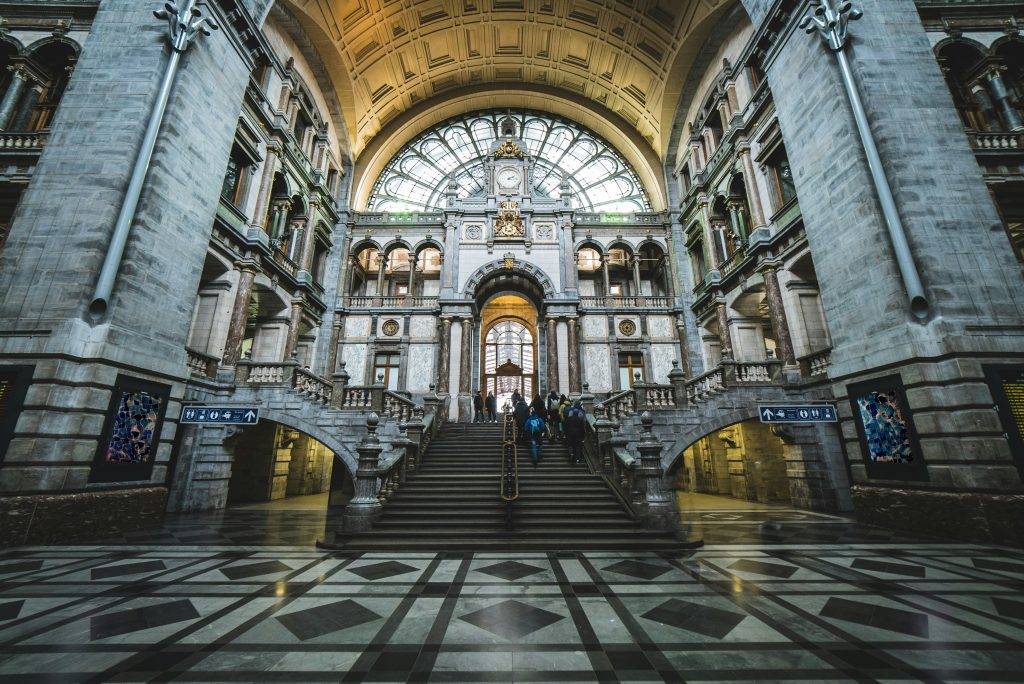
Shopping in Antwerp
Antwerp is a shopper’s paradise, particularly for those interested in high-end fashion, diamonds, and flea markets. The city has several main shopping areas and streets worth exploring.
High-End Fashion
Antwerp is one of Europe’s capitals of fashion design, with many famous designers based here or starting their careers in the city. Fashion enthusiasts can browse the designer boutiques located in the Fashion District around the Meir and Leopold De Waelplaats. Top designers with shops in the area include Dries van Noten, Ann Demeulemeester, A.F. Vandevorst, Walter Van Beirendonck, and Verso. The Nationalestraat is also lined with designer boutiques. Antwerp’s fashion scene stays on the cutting edge.
Diamond District
As one of the world’s leading diamond trading hubs, Antwerp has a entire neighborhood devoted to the diamond trade. The diamond district is located between the Central Station and the Diamond Square. Hundreds of diamond stores fill the streets, selling finished jewelry and loose diamonds. Major dealers have showrooms in tall, guarded buildings. Even for non-buyers, it’s worth a visit just to people watch and soak in the sparkling atmosphere.
Flea Markets
On Sundays, the Vrijdagmarkt square hosts the largest flea market in Antwerp. Here you can browse through stalls of old books, jewelry, records, vintage knick-knacks, and antique treasures. The quality and variety of goods for sale draws large crowds each weekend. Other notable flea markets include the Middelheim Antique Market and the Old Market.
Shopping Streets
In addition to the designer boutiques, Antwerp has many lively pedestrianized shopping streets lined with retail stores. Key areas to explore include the Meir, Leopoldstraat, Schuttershofstraat, Huidevettersstraat, Kammenstraat, and Kloosterstraat. You’ll find an eclectic mix of Belgian and international brands, boutiques, department stores, and more. It’s easy to spend an entire day window shopping along these charming streets.
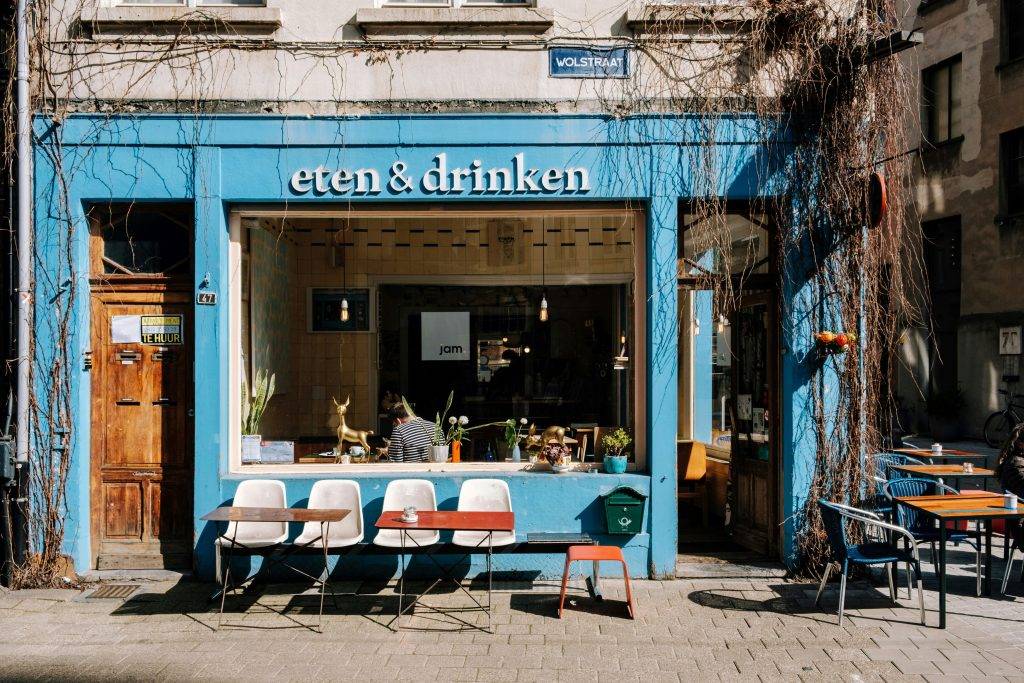
Dining in Antwerp
Antwerp is a foodie’s paradise, with an incredibly diverse culinary scene showcasing everything from traditional Belgian fare to nearly every international cuisine imaginable. While you’re visiting, make sure to sample some of these local specialties:
Local Specialties
- Moules-frites: This classic Belgian dish features steamed mussels served with crispy fries and garlic mayonnaise or other dipping sauces. Try the moules at Balls & Glory or ‘t Brantyser.
- Stoverij: This rich Belgian beef stew is slow-cooked with Belgian beer until fork-tender and served with fries or bread. Le John serves a fantastic traditional stoverij.
- Waterzooi: A creamy chicken stew made with vegetables, cream and eggs. Often served with bread or fries. The waterzooi at Peter’s Bistro is superb.
- Vol-au-vent: Flaky puff pastry stuffed with chicken, mushrooms, and a creamy sauce. Grab one at In den Ouden Vogelstruys.
- Konijn in geuze: Rabbit braised in geuze lambic beer until fall-off-the-bone tender. Try it at Zuiderterras.
- Antwerpse handjes: Cone-shaped pastries filled with almond paste and shaped like hands. Buy them at bakeries like patisserie Horta.
Top Restaurants by Cuisine
In addition to Belgian fare, you can find outstanding international restaurants serving just about any cuisine in Antwerp. Top picks include:
- French: August for upscale French fine dining, or Le Zout for brasserie classics.
- Italian: Da Giovanni Trattoria for homemade pastas and wood-fired pizzas, or Osteria Romana for an upscale Italian meal.
- Japanese: Yamazato for sushi and teppanyaki, or Little Koi for ramen.
- Indian: Nukli for flavorful curries, kebabs and more.
- Thai: Prai Thai for pad thai and Thai curries, or Souvenir for elevated Thai fusion.
- Vietnamese: Pho Today for noodle soups and spring rolls.
- Mexican: Nacho Mama’s for tacos, enchiladas and margaritas in a funky setting.
Whether you’re craving mussels and fries or pho and spring rolls, Antwerp’s diverse dining scene has something for every palate and budget. Don’t leave without sampling some of the city’s renowned traditional Belgian cuisine!
Lodging
Antwerp offers a wide variety of accommodation options to fit any budget or style. The city center and historic Old Town have the most hotels, hostels, and B&Bs clustered together within walking distance of top sights like the Cathedral of Our Lady and Grote Markt.
Neighborhoods to Stay
City Center: Convenient location right in the middle of everything. Close to shopping streets like Meir and major museums. More modern business-style hotels. Can be noisy and crowded.
Old Town: Charming historic atmosphere with cobbled streets and medieval architecture. Near the river and Cathedral. Smaller boutique hotels and B&Bs. Fewer convenience stores or public transport options.
South Antwerp: Trendy, upscale area with luxury hotels, shops, restaurants, and museums. Farther from the historic core but still walkable. Near popular Museum aan de Stroom.
Berchem Station: Affordable lodging and transport hub. 10 mins by train to central Antwerp. Less touristy, more local vibe. Limited sights.
Zurenborg: Elegant residential district with unique Art Nouveau architecture. Quaint B&Bs and apartments. Peaceful. Requires public transport or taxis to reach downtown.
Hotels
Antwerp offers everything from design hotels to historic properties and global chains. Mid-range options generally start around €100-150 per night. High-end luxury hotels go up to €300 or beyond.
Some recommended hotels include:
- Hotel Julien: Elegant boutique hotel in a 16th century building. Roof terrace and spa. Near the Fashion District.
- Hotel O Kathedral: Modern minimalist rooms overlooking the Cathedral of Our Lady. Rooftop bar.
- Hotel Franq: Sleek and contemporary hotel with a Michelin-starred restaurant. Near the train station.
- Hotel Rubens Grote Markt: Historic charm on Antwerp’s main square. Traditional styling and furnishings.
Hostels
For budget travelers, Antwerp has great hostels with dorms starting around €20 per night. Look for locations near the Old Town or Berchem Station.
Top hostels include:
- The Pulcinella: Quirky, artsy hostel with fun decor. Bar, lounge, and bikes for rent.
- Hostel Antwerp City: Well-rated modern hostel with a terrace. Near the Meir shopping district.
- Hostel De Witte Lelie: Historic 15th century guild house turned hostel. Cozy communal areas and bar.
Useful Information
Public Transportation
Antwerp has an extensive public transportation system consisting of trams, buses, and taxis that can get you anywhere in the city and surrounding region. Trams run frequently and cover major sights. Bus lines fill in the gaps. Buy tickets from vending machines located at stops, newsstands, or on board. A single ticket is valid for 1 hour. Day passes are more economical if you’re taking multiple trips. Be sure to validate your ticket when boarding. The De Lijn website has full transport schedules and maps.
Taxis can be hailed on the street, reserved by phone, or found at designated stands. They are metered, so rates are consistent. Tip about 10%. Uber also operates in Antwerp.
Safety
Is Antwerp safe? Antwerp is generally safe, but be alert for petty crimes like pickpocketing around tourist sites, train stations, and crowded events. Carry only the cash you need for the day and leave valuables in a safe at your hotel. Avoid unlit streets and parks at night. Report any incidents to the nearest police station. Emergency numbers are 112 for the police and 100 for the fire brigade and ambulance.
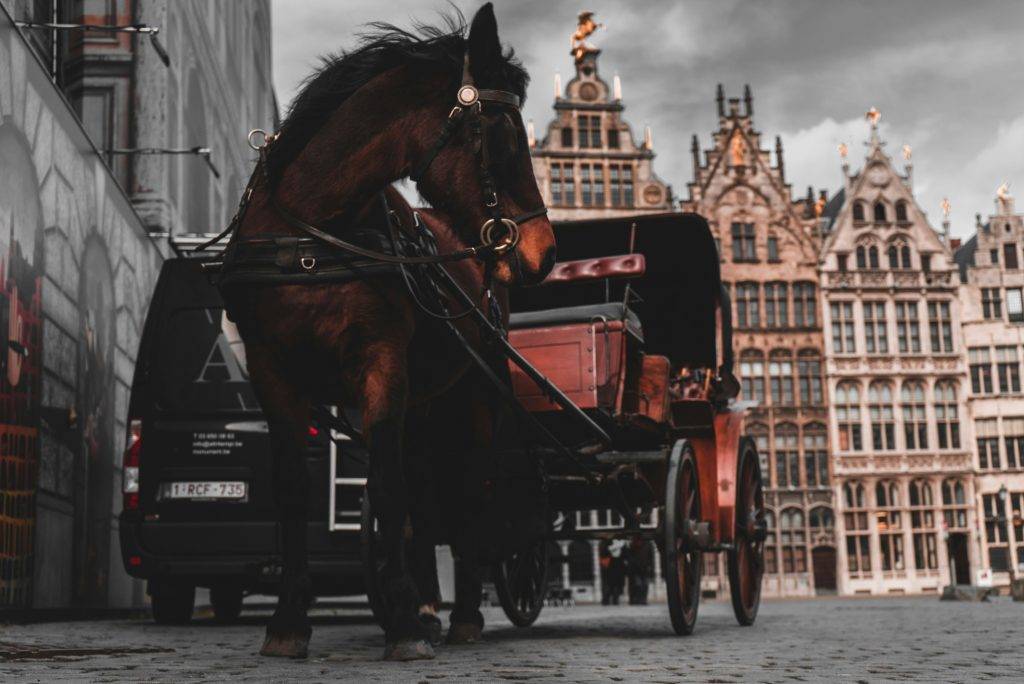
Money
Belgium uses the euro (EUR). Cash is preferred for small purchases while cards are widely accepted. Notify your bank you’ll be abroad to prevent your cards from being blocked for unusual activity. ATMs are abundant but check for fees. Tipping is not required but customary for good service.
Is Antwerp expensive? The city can be moderately expensive compared to other major European cities. While accommodation and dining options can vary in price, there are also budget-friendly alternatives available. Exploring local markets and opting for public transportation over taxis can help manage costs. Overall, Antwerp offers a range of experiences suitable for different budgets.
Language
Dutch is the official language, but many locals speak English. Learning a few key Dutch phrases can be appreciated. French is also commonly spoken. Street names and signs are marked in Dutch. Having a translation app on your phone can be helpful.
Conclusion
In conclusion, Antwerp is a captivating destination that offers a rich tapestry of experiences for travelers of all interests and budgets. From its historical landmarks like Het Steen and stunning train stations to its vibrant shopping streets and delectable culinary scene, Antwerp delights visitors with its unique blend of old-world charm and modern sophistication. Whether you’re exploring its renowned museums, immersing yourself in its bustling markets, or simply soaking in the atmosphere of its picturesque neighborhoods, Antwerp invites you to discover its treasures and create unforgettable memories. With its dynamic energy and diverse attractions, Antwerp truly proves itself to be a gem of a city worth exploring time and time again.
As you reflect on the wonders of Antwerp and the experiences it has to offer, ask yourself: When will you embark on your own adventure to uncover the secrets of this captivating city?
For hassle-free trip planning, visit our Accommodation and Transportation pages. Find the best deals for a seamless Antwerp experience!
